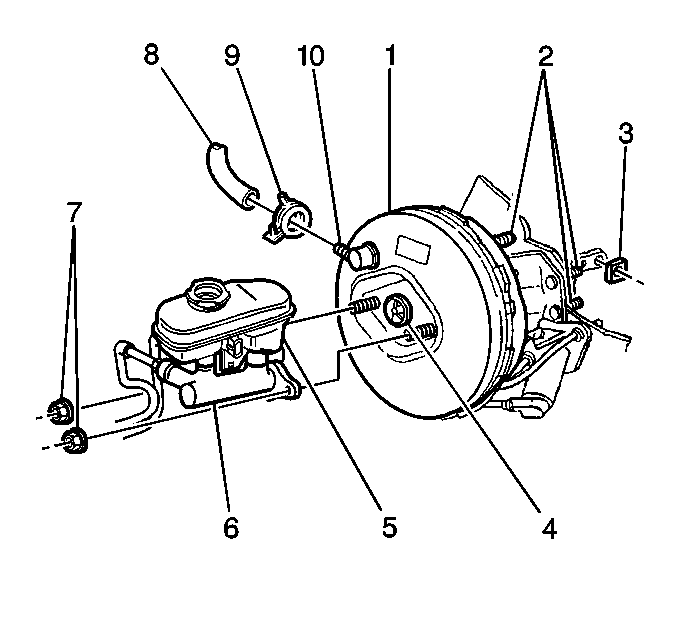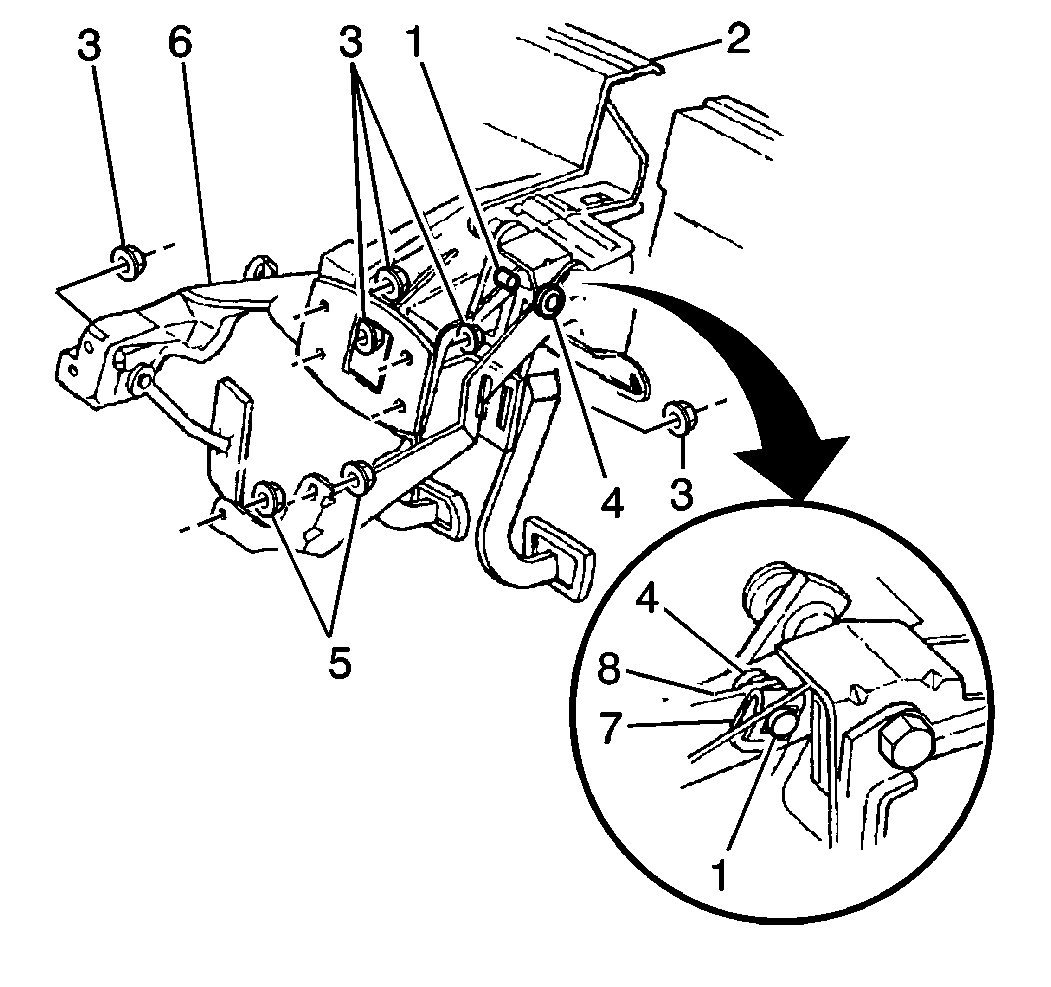Removal Procedure

- Remove the hood rear seal.
- Remove the air inlet screen. Refer to
Air Inlet Grille Panel Replacement
in Body Front End.
- Remove the brake booster vacuum hose clamp (9) and the vacuum
hose (8) from the check valve (4).
- Remove the master cylinder nuts (7) attaching the master cylinder
(6) to the brake booster (1).
- Remove the master cylinder from the brake booster.
| • | Move the master cylinder forward and toward the driver's side
in order to provide clearance for the booster. Moving the master cylinder
will flex the brake pipes slightly. |
| • | Do not bend or distort the brake pipes. |
- Remove the left side instrument panel insulator. Refer to
Instrument Panel Insulator Replacement
in Instrument Panel,
Gauges and Console.

- Remove the brake pedal
nuts (3) attaching the brake booster to the brake pedal with bracket (6).
- On vehicles equipped with manual transmissions, loosen the clutch
master cylinder nuts (5).
- Remove the brake booster pushrod (8) from the brake pedal lever
pin.
| • | From inside the vehicle, remove the brake pedal pushrod retainer
(7) and the pushrod washer (4). |
| • | Tilt the entire brake booster slightly in order to work the brake
booster pushrod (8) off the brake pedal pin. Do no put undue side pressure
on the pushrod. |

- Remove the power brake
booster (1) from the vehicle.
Installation Procedure

- Install the power brake
booster (1) onto the vehicle.

- Install the brake booster
pushrod (8) onto the brake pedal lever pin (1).
| • | Tilt the entire brake booster slightly in order to work the brake
booster pushrod (8) onto the brake pedal pin. Do not put undue side pressure
on the pushrod. |
| • | From inside the vehicle, install the brake pedal pushrod washer
(4) and the pushrod retainer (7). |
Notice: Use the correct fastener in the correct location. Replacement fasteners
must be the correct part number for that application. Fasteners requiring
replacement or fasteners requiring the use of thread locking compound or sealant
are identified in the service procedure. Do not use paints, lubricants, or
corrosion inhibitors on fasteners or fastener joint surfaces unless specified.
These coatings affect fastener torque and joint clamping force and may damage
the fastener. Use the correct tightening sequence and specifications when
installing fasteners in order to avoid damage to parts and systems.
- Install the brake
pedal nuts.
Tighten
Tighten the brake pedal nuts to 20 N·m (15 lb ft)
in the following sequence:
- On vehicles equipped with manual transmissions, tighten the clutch
master cylinder nuts (5).
Tighten
Tighten the clutch master cylinder nuts to 27 N·m (20 lb ft).

- Install the master cylinder
(6) onto the brake booster (1).
- Install the master cylinder nuts attaching the master cylinder
to the brake booster.
Tighten
Tighten the brake master cylinder nuts to 29 N·m (21 lb ft).
- Connect the vacuum hose (8) and the clamp (9) to the check valve
(10).
- Install the left hand instrument panel insulator. Refer to
Instrument Panel Insulator Replacement
in Instrument Panel,
Gauges and Console.
- Install the transmission fluid filler tube. Refer to
Filler Tube Replacement
in Automatic Transaxle.
- Install the air inlet screens. Refer to
Air Inlet Grille Panel Replacement
in Body Front End.






